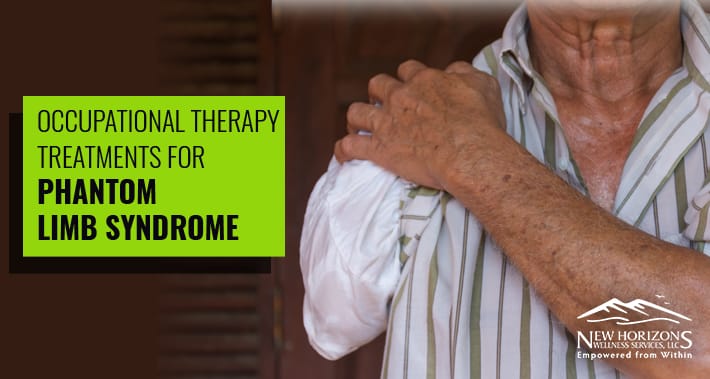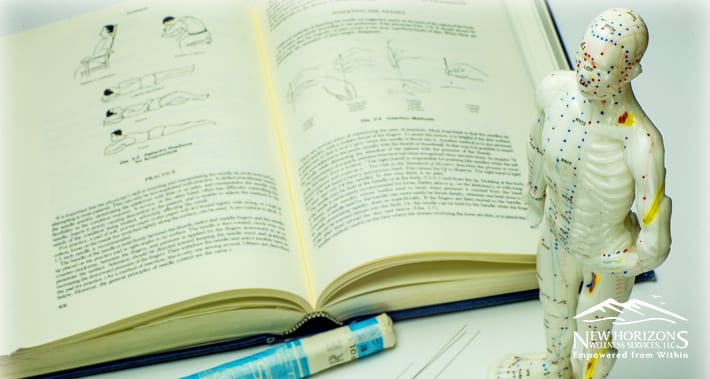
One of the main goals of occupational therapy is to help people adapt and cope with challenges and problems in their lives, especially those that come with life changes.
These changes can be physical, emotional, or some combination of both.
Losing a limb can require massive adjustments in how you live your life, and an occupational therapist can be a key part of your health care team as you adjust.
One condition many people experience after amputation is phantom limb pain, or phantom limb syndrome.
It can be a distressing state of affairs, but occupational therapy treatments for adults can help.
What Is Phantom Limb Syndrome?
A common condition after amputation is phantom limb pain or phantom limb syndrome.
In this condition, you may feel pain, discomfort, or other sensations in the limb that is no longer there.
Despite being described for hundreds of years, phantom limb syndrome is not well-understood, but there are strategies and treatments for relief.
It should not be confused with residual limb pain, where the remaining part of a limb is experiencing pain or discomfort.
In the case of phantom limb syndrome, the sensations appear to be coming from a part of your body that is no longer there.
It’s more common in upper limb amputations, such as hands or arms, rather than lower limbs like your leg or foot.
What Does Phantom Limb Syndrome Feel Like?
Sensations can vary, including sharp pains, pins and needles, pressure, twisting, or throbbing.
Other characteristics of phantom limb syndrome are also highly variable from person to person.
This pain might be constant, or come and go.
You might experience phantom limb syndrome shortly after amputation, or it might not appear for years afterwards.
Phantom sensations most often occur in the part of the body that is furthest from the amputation site – for example, in an arm amputation it’s more common to feel something in the missing hand or finger than in the elbow or upper arm.
Certain situations might trigger phantom limb syndrome, such as extreme temperatures, stress, or being touched elsewhere on your body.
What Causes Phantom Limb Syndrome?
It’s still unclear what causes these sensations, even though people have been reporting it for centuries.
However, there are a number of theories that are being explored that might explain it.
When a limb is amputated, the peripheral nerves are damaged.
Because of this damage, signaling in that limb can be disrupted or become overexcited, telling your brain that sensations are occurring when they are not.
The brain also remaps sensory information from your amputated limb to other parts of your body – for example, from an amputated hand to the shoulder.
When this happens, touch on your shoulder might feel like it’s coming from your amputated hand.
Another possible explanation is sensitization. When a peripheral nerve is severed, such as in an amputation, your spinal nerves can become more sensitive in response.
You might be at further risk for phantom limb syndrome if you already had pain in your limb before it was amputated, or if you have residual limb pain after.
How Can An Occupational Therapist Help With Phantom Limb Syndrome?
An occupational therapist is one person who may be able to help you with your phantom limb syndrome.
Besides being distressing and distracting, phantom limb syndrome may also interfere with your ability to properly use prostheses and perform activities of daily living.
By working with your occupational therapist, you can learn to manage pain and sensation in your phantom limb, in order to concentrate on your tasks.
Mirror box therapy is an exercise where you use a mirror to copy your unaffected limb, and perform tasks with it while looking in the mirror and imagining your amputated limb doing them.
This tricks your brain into thinking your amputated limb is still there, with muscles and nerves behaving normally and without pain or discomfort.
Similarly, you may be asked to try VR therapy, where virtual reality is used to create a limb you can move and observe.
Your occupational therapist may use a TENS device to stimulate nerves through electrical currents.
If you have had a procedure to improve your control of a myoelectric prosthesis, you may have difficulty distinguishing between phantom limb movement and your nerve-transfer exercises.
This is something an occupational therapist can help you with, using many of the same techniques, in order to help you effectively use your prosthesis.
Biofeedback collection through electrodes may be used to help learn more about what is causing you pain, whether in your phantom or residual limb, and this can help you learn more about what might help in your particular case.
Your occupational therapist may also suggest heat or cold therapy, acupuncture, massage therapy, or over-the-counter medications that can help alleviate pain and help you get on with your day.
They can also work with you on learning relaxation and distraction techniques, properly using your prosthesis, making changes to your environment and routines, and helping you stick to your treatment plan.
They might also be able to connect you with other people experiencing phantom limb syndrome, so you can share your experiences and feel less alone.
These efforts can help lessen irritation and pain, and help keep your brain and body active.
Book An Appointment With New Horizons Wellness Services
The occupational therapists at New Horizons Wellness Services are ready to help you manage your pain and regain function in your everyday life.
Contact us today to make an appointment and learn what we can do.
Yours in Health,
New Horizons Wellness Services13333 SW 68th Pkwy,
Tigard, OR 97223
- https://g.page/newhws
New Horizons Wellness Services provides a true multidisciplinary approach to mental & physical health treatments for children, adults and families.

